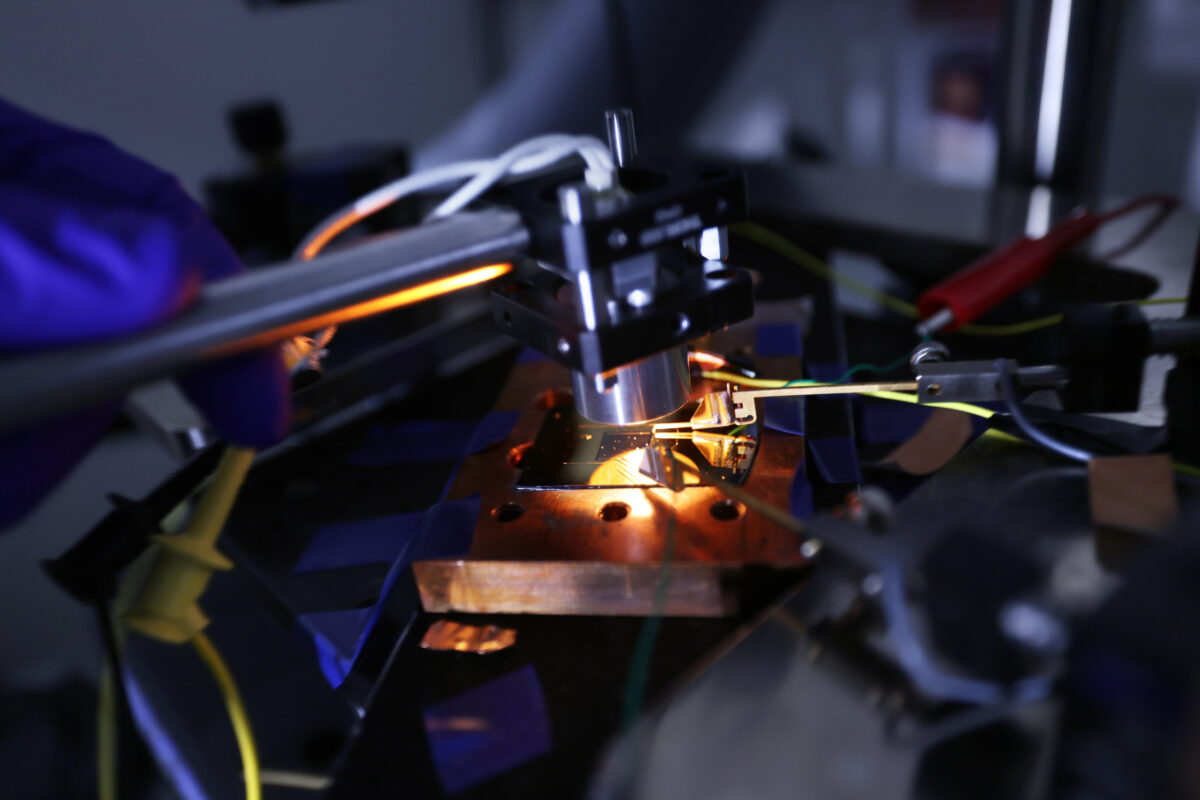Thermophotovoltaics (TPV) is a power generation technology that uses thermal radiation to generate electricity in photovoltaic cells. A TPV system generally consists of a thermal emitter that can reach high temperatures, near or beyond 1,000 C, and a photovoltaic diode cell that can absorb photons coming from the heat source.
The technology has drawn the interest of scientists for decades, because it can capture sunlight in the entire solar spectrum and has the technical potential to beat the Shockley-Queisser limit of traditional photovoltaics. However, the efficiencies reported thus far have been too low to make it commercially viable, as TPV devices still suffer from optical and thermal losses.
With this in mind, a group of researchers at the University of Michigan in the United States have developed TPV cells that reportedly address these issues and achieve a power conversion efficiency of 44%.
“This level of efficiency could enable thermal battery systems to reach a price point needed to put most of the grid on wind and solar power,” said research's lead author, Andrej Lenert, told pv magazine. “Such systems have to continuously draw energy from a hot storage material such as graphite as it cools from its maximum allowable temperature. Getting 40% efficiency at storage temperatures as low as 1300 C, versus requiring 2000 C as previously, means these batteries could possibly get twice as much energy per kg of graphite.”
According to Lenert, this result represents a major improvement in TPVs and solid-state heat-to-power generation at large. “It is a culmination of several years of intense research to understand how to minimize energy losses and mechanical issues in air-bridge TPV cells, which we originally reported in 2020,” he added. “Those cells were 32% efficient and relatively fragile, now we are closer to 44% and have a much more robust technology. Though still not at the kW or MW scale, this result demonstrates what is possible with single-junction TPV cells, fulfilling decades-old theoretical predictions made by the TPV community.”
In the study “High-efficiency air-bridge thermophotovoltaic cells,” which was recently published in Joule, Lenert and his colleagues described the cell as an air-bridge indium gallium arsenide (InGaAs) device that can absorb most of the in-band radiation to generate electricity. It can also serve as a nearly perfect mirror, with almost 99% reflectance.
Popular content
The cell was built with a silicon substrate, an air bridge structure with a thickness of 570 nm, a rear contact made of gold (Au), titanium (Ti), an n-doped InGaAs layer, a membrane layer with a thickness of 1 µm, an InGaAs absorber, and a front contact made of Au, Ti, platinum (Pt), and p-doped InGaAs. Three different absorber layers were tested with energy bandgaps of 0.74 eV, 0.90 eV, and 1.1 eV, respectively.
The air-bridge layer is embedded between the three active layers and the rear Au mirror to enhance backside reflectance and recovery of out-of-band photons. The membrane support layer is intended to minimize buckling of the free-standing semiconductor membrane and ensure a single cavity mode within the air layer.
“The combination of a nanoscale air layer and a relatively high coverage of conductive rear electrodes ensures that the air-bridge thermal resistance is small compared with that of the Si substrate,” the scientists emphasized. “Additionally, the design includes a membrane support layer to minimize buckling of the free-standing semiconductor membrane and ensure a single cavity mode within the air layer.”
The researchers found that the cell with an absorber bandgap of 0.90 eV achieved the best performance. It reached a power conversion efficiency of 43.8% at 1,435 C. “It surpasses the 37% achieved by previous designs within this range of temperatures,” Lenert stated. “We’re not yet at the efficiency limit of this technology. I am confident that we will get higher than 44% and be pushing 50% in the not-too-distant future,” added research co-author, Stephen R. Forrest.”
These results, according to the research group, also promise significant improvements in the device's round-trip efficiency. “It’s a form of battery, but one that’s very passive. You don’t have to mine lithium as you do with electrochemical cells, which means you don’t have to compete with the electric vehicle market,” Forrest further explained. “Unlike pumped water for hydroelectric energy storage, you can put it anywhere and don’t need a water source nearby.”
This content is protected by copyright and may not be reused. If you want to cooperate with us and would like to reuse some of our content, please contact: editors@pv-magazine.com.



By submitting this form you agree to pv magazine using your data for the purposes of publishing your comment.
Your personal data will only be disclosed or otherwise transmitted to third parties for the purposes of spam filtering or if this is necessary for technical maintenance of the website. Any other transfer to third parties will not take place unless this is justified on the basis of applicable data protection regulations or if pv magazine is legally obliged to do so.
You may revoke this consent at any time with effect for the future, in which case your personal data will be deleted immediately. Otherwise, your data will be deleted if pv magazine has processed your request or the purpose of data storage is fulfilled.
Further information on data privacy can be found in our Data Protection Policy.